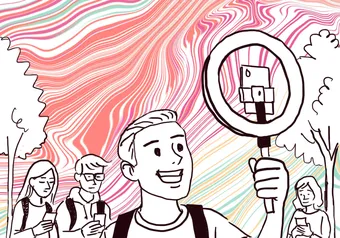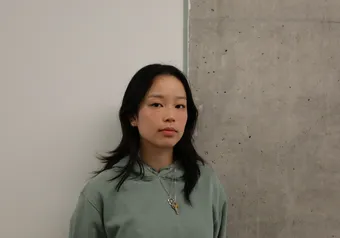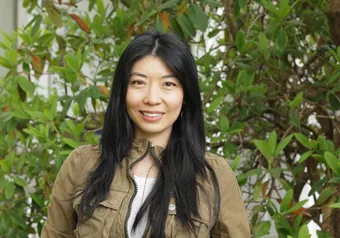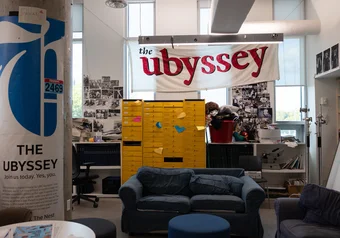Rhodes, I knew, was a colonist who dreamed of stretching British empire from “Cairo to Cape Town.” Failing in that
endeavour, Rhodes did win much of southern Africa for the British. (White-ruled Rhodesia, independent Zimbabwe’s predecessor, was named for the colonist.) While he didn’t carry the reputation of apartheid’s architects for unabashed racism, he fought for a white minority and I found it odd that the University of Cape Town, South Africa’s premier university, would leave such a noble tribute to the man.
The occasional student I asked muttered something about Rhodes having donated the land for the university. It was, I was told, what it was.
That is all to say that, months later, the shit came as a surprise.
Walking home from class one day in the spring, a friend and I both noticed a distinctly foul smell as we descended the steps next to the statue. It turned out earlier that afternoon a UCT student had flung feces at the statue to protest its prominent placement on campus. So launched the #RhodesMustFall movement, several weeks of boisterous protests, campus occupations and, finally, the removal of the statue from campus.
Of course, the movement was about far more than the removal of the statue
“If we can see that the statue is a problem, we can start looking more deeply at the norms and values of institutionalized racism that don’t physically manifest themselves,” Kgotsi Chikane, one of the movements leaders, told NPR. “We want a complete shift in the thinking about curriculum. It can’t be Eurocentric anymore. We need a curriculum that is about our continent, and not just the negatives, but the positives as well.”
But while the fight against these entrenched issues — UCT, for example, has not a single black, female full professor — had clearly been brewing for sometime, it came out of nowhere for myself and many other exchange students.
The car wound this way and that as it looped from one expressway to another, finally dropping me in the bucolic and defiantly artificial suburb of Rondebosch.
“How’s Cape Town?”
The question came often from friends and family back home. Cape Town, I would tell people, is quite nice. But I was answering a different question: “How is Cape Town treating you?”
Cape Town was an uphill walk to campus along a brick pathway in a pleasant suburb. Cape Town was beautiful weather, and when it wasn’t, Cape Town was a cheap cab ride. Cape Town was hiking Table Mountain. Cape Town was volunteering with SHAWCO to help poor children in townships. Cape Town was a visit to the District Six Museum and a reminder of how bad apartheid was, emphasis on the past. Cape Town was attending festivals where you could wander high through seas of white people — Rocking the Daisies in the spring, AfrikaBurn in the fall. Cape Town was cheap booze, cheap clubs and cheap drugs. Cape Town was a series of carefree hookups and meaningful friendships. Cape Town was awesome!
My house in Cape Town was a sprawling affair, boasting two gardens, ten bedrooms, a standalone cottage and six levels. The property sits well above the sidewalk and is masked by an imposing fence and barbed wire. But for the steady rotation of exchange students lucky enough to gain entrance and the veritable army of maintenance workers in their blue coveralls cycling through to repair, plant and take their breaks on the benches scattered across the lawns, the revelation is rather impressive. The house features two-foot thick whitewashed walls and a comically steep tin roof extending over a long veranda facing the main commercial and supported by arching metal work.
Built in the 1840s, it is hard to pinpoint when or precisely how the house has changed over three centuries on Devonshire Hill, a solid rock terrace rising above the Liesbeek River valley. The interior is now interrupted by the strange quirks of converted living, with particleboard dividing walls and plastic sheeting over an extra bathroom off the kitchen, itself oddly elevated and accessible only through a doorway that stands less than five feet high. The fireplace has long been blocked but no central heating has replaced it and the glass doors looking out onto a brick patio let in the winter chill.
Yet for all the misguided renovations, or lack thereof, the house was a very comfortable place. I spent lazy summer mornings reading in the garden, braaied with friends in the afternoon and packed two hundred people in at night. The house sits a stone’s throw from the traffic and bustle of Main Road but you would never know it once you step inside. It pleasantly mediated my experience of Cape Town and though I generally preferred to be out than in, the transition took place entirely on my own terms.
How, then, was Cape Town?
Cape Town, filtered through the thick walls of “Greenbank”, as a ceramic plate near the entrance rather arbitrarily designated the house, was just as I wanted it to be. Any outside engagement was an affirmative choice and in many respects this made it quite impossible to answer, “How is Cape Town?”
But the walls of Greenbank constricted my view of the world — one that I could only fleetingly notice was bigger than was let on to those of us on exchange. It was easy to see Cape Town through the lens of the prevailing narrative that South Africa is on a perpetual march forward, beyond the racism brought to the southern tip of the continent by an undefined mass of European settlers that culminated in apartheid and has been on retreat since 1994.
In reality progress in South Africa, like most everywhere, has ebbed and flowed presumably from time imperial and certainly throughout recorded history. The outlines of this rollercoaster of history is too fraught and convoluted to unpack here, but two examples should suffice to give a sense. Early twentieth-century Cape Town under British rule was seen by some as a “black utopia” — running counter to the narrative of binary colonial oppression — and the leaders of the non-white population eagerly sought membership as imperial subjects of the Crown, viewing this as a hedge against the more vitriolic racism of Afrikaner nationalism. More recently, many left-wing South Africans have begun to see Nelson Mandela, hailed internationally as the savior of South Africa, as a sellout who caved to white demands at the expense of black liberation.
These realities and others are buried when exchange students remain, as it is so easy to do, behind the literal and intellectual houses built for us abroad.
Searching the address of my Cape Town house turned up a blog by an American named Alex who, living there in 2009, recorded the following:
The paragraph is a stunning testament to the collective blindness of the Cape Town exchange student. Alex fawns over the majesty of a memorial to the man who pioneered white supremacy in South Africa just before lamenting the oppression of the “Apartheid government.”
My cohort of exchange students saw our eyes forced open — the psychic walls of houses breached even if the physical structures remained the province of Western minds and bodies — by the #RhodesMustFall movement. It was impossible to ignore the protests, but as Alex’s account shows, nothing had prepared us for it.
The experience was stunning not so much for what it showed me about South Africa and the university where I was studying as for what it suggested about the rest of my life. The awakening was especially jarring given the feeling of living and learning in a foreign country. But throughout our education, academically and outside the classroom, we are called on to assess situations far from our lived experiences. If the walls of Greenbank were causing me to miss so much in Cape Town, what else has been distorted by my place — literally and emotionally — in the world?
First online
Share this article







